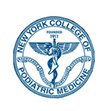Cysts
A bone cyst is a benign, non-cancerous, fluid-filled cavity of the bone which occurs mostly in children, and young adults. There are two types of bone cysts: unicameral bone cyst and aneurysmal bone cyst. The cause of a bone cyst is unknown; however, some theories state that unicameral bone cysts are formed as outgrowths of the growth plate or synovial tissue that surrounds the joints, and aneurysmal bone cysts occur due to abnormalities in the blood vessels present inside the bone.
Bone cysts do not produce symptoms and are usually detected during diagnostic tests performed for other conditions. At this stage, they are not harmful, but as they are not easily identified, they may grow and cause bone weakness, which can in turn lead to fractures. Symptoms may include swelling, pain, and inability to bear weight or move. The diagnosis of bone cysts is performed with imaging tests such as X-ray, MRI and CT scans, and confirmed with a biopsy (fluid from the cyst is removed and examined in the lab).
Most bone cysts heal in six months to a year without any treatment. However, unresolved bone cysts can be treated based on factors such as the size of the cyst and your child’s bone strength.
- Non-surgical treatment : is performed when the cyst is diagnosed at a very early stage and is still very small. It may include timely observation of the cyst, injection of steroids and maintaining a certain level of activity that will prevent fractures.
- Surgical treatment : is performed in cases of large and painful cysts that have a high chance of fractures. Surgical techniques include aspiration or removal of fluid from the cyst using a needle. Following this, curettage and bone grafting may be performed, where the cyst may be scraped off from the bone and the cavity sealed with the help of bone graft. Your doctor may also inject bone marrow into the cyst to promote healing.



